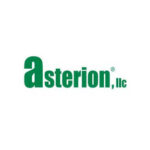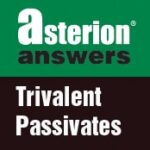As published in Products Finishing Magazine, August 2020 Issue. When I began my career in metal finishing in the mid-1980s, the industry took an introspective view of where it came from and in what direction it was going. It is interesting to look back at that time and remember all of the changes that began occurring as we entered the 1990s. Environmental concerns dominated the industry. I can specifically remember the market being flooded with new technology and equipment to deal with environmental concerns about the plating process. This was followed by developments in plating … [Read more...]
Suggestions on Shutting Down Plating Lines for the Short-Term
With more factories redirecting their production capacity to help fight the coronavirus pandemic, you may find yourself needing to idle one or more of your plating lines for a few days or weeks. While shutting down a plating line is rarely desirable, today's business environment may demand it. On behalf of the Asterion Team, here are some suggestions on shutting down your lines for the short-term. Each suggestion should be further customized to best suit you plating operation and business requirements. Keep heated plating baths at minimum temperatures Top off cleaner tanks and shut … [Read more...]
Alkaline Zinc Plating Revisited
Alkaline non-cyanide zinc (ANCZ) plating has been prevalent in the plating industry for about 50 years. It has become a preferred process for finishers who require a fairly bright zinc-plated finish on parts that have challenging geometrical shapes. ANCZ is typically the chosen zinc process for complicated geometrical shapes due to its ability to plate zinc at a preferred low ratio of zinc thickness from the high current density areas to the low current density areas. Thickness ratios can range anywhere from 1:1 to 2:1 from the high current density area to the low current density area. Bath … [Read more...]
Is there a better way to provide a high corrosion resistant finish that is not an expensive alloy process?
If a high corrosion resistant finish provided 400+ hours to first white corrosion product and 700+ hours to red corrosion, until now, the answer was NO. Alloy finishes with passivate and seals that were complex and difficult to control were the only choice to achieve 400+ hours to first white corrosion product and 700+ hours to red corrosion. Traditional zinc plating just could not meet these requirements. As a result, finishers and their customers could only look to zinc alloy systems to provide high corrosion resistant attributes. The challenges associated with these processes were just a … [Read more...]
Increasing Bath Life and Quality of Trivalent Passivates on Zinc Plate
As published in Products Finishing Magazine, April 2019 issue. Q: What is the best way to increase the bath life and quality of trivalent passivates on zinc plate? A: One of the more significant developments of the last 20 years in the metal finishing industry is the commercial development and application of trivalent passivates on zinc electroplate. These developments have allowed applicators to eliminate the use of toxic hexavalent-chromate conversion coatings, thereby safeguarding the health of all involved in the handling and processing of zinc-plated parts. Further, these trivalent … [Read more...]
It’s All About Plating
Plating is one of our specialties at Asterion. It's a big deal for our manufacturing clients and is often the most important part of their production process. Are you aware of all the different ways metal can be plated onto different media? There are also many different plating solutions for each unique and custom parts manufacturing job. Here are a few of our favorite posts on various plating methods and outcomes: Hard Chrome Plating The process of hard chrome plating has been used since the early part of the 20th century. It is a process that is used in nearly every aspect of manufacturing … [Read more...]
Zinc Plating
Years ago zinc plating was used for corrosion protection and was mainly applied using a cyanide based process. The process of plating zinc from an Acid Bath brought with it brighter deposit and Zinc Plating became a cosmetic finish as well as corrosion protective finish. In recent years the process of plating Zinc from an Alkaline Non Cyanide solution has been perfected. Today nearly all Zinc is plated from either the Acid Zinc or the Alkaline Non Cyanide processes. Each process has its positive and negative points. Acid Zinc produces a bright, level, Chrome like finish. The Alkaline … [Read more...]
Why Zinc Plating?
Most people you talk to about zinc electroplating, have very little knowledge of what that process means, or why you would want to perform it. As you go a little deeper into the explanation of what zinc electroplating entails, they begin to see the picture. Looking at a car, there are many parts that will corrode from exposure to water and salt from the roads. The corrosion leads to part failure if left unchecked. The next question that comes to mind is, how do you protect these parts? Answer: You add a coating on top of the parts to slow down or prevent corrosion. There are a variety of … [Read more...]
Functional Zinc Processes
Zinc is one of the most widely used functional sacrificial coatings to inhibit corrosion of ferrous metals. Over the years a variety of Zinc plating and post treatment chemistries (chromates –hexavalent and trivalent-- and seals) have been developed to improve the aesthetics and functionality of zinc coatings. Over the years there have been three types of zinc processes: Cyanide based chemistry – seldom used today because of safety issues, waste treatment and disposal cost—but still it is needed in some applications. These processes were very forgiving and easy to control. Environmental … [Read more...]




